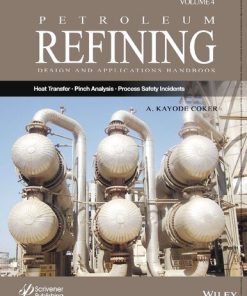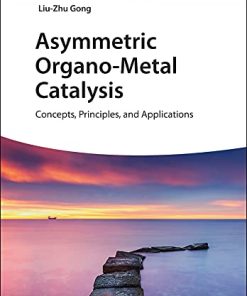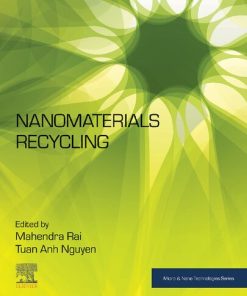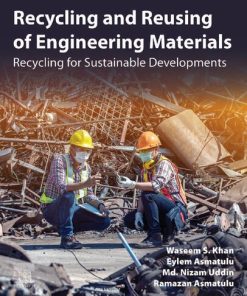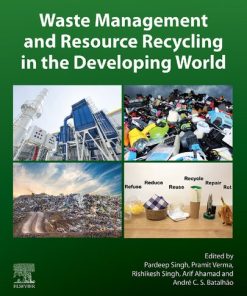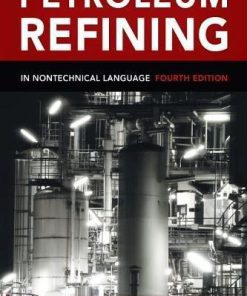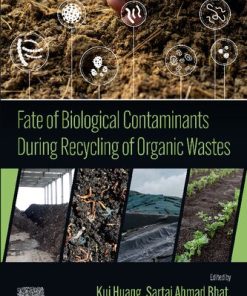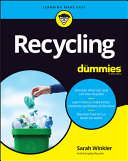(Ebook PDF) Principles of Metal Refining and Recycling 1st edition by Thorvald Abel Engh, Geoffrey Sigworth, Anne Kvithyld 0192539884 9780192539885 full chapters
$50.00 Original price was: $50.00.$25.00Current price is: $25.00.
Principles of Metal Refining and Recycling 1st edition by Thorvald Abel Engh, Geoffrey K. Sigworth, Anne Kvithyld – Ebook PDF Instant Download/DeliveryISBN: 0192539884, 9780192539885
Full download Principles of Metal Refining and Recycling 1st edition after payment.
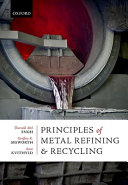
Product details:
ISBN-10 : 0192539884
ISBN-13 : 9780192539885
Author : Thorvald Abel Engh, Geoffrey K. Sigworth, Anne Kvithyld
Principles of Metal Refining and Recycling provides a self-contained introduction to the field of purification and recycling of metals. The scientific principles in the treatment of the various metals are the same. The importance of using a clean and properly alloyed metal is described in detail. The text covers thermodynamics, physical and transport properties, mixing, mass transfer and numerical models. It describes methods for removal of dissolved impurity elements, particles, and inclusions. It considers important aspects of the solidification process, remelting and adding of alloys. Recycling, future challenges and specific processes for each metal are discussed in detail. The book is a greatly extended update of the 1992 book Principles of Metal Refining by T. Abel Engh. It includes in particular the subjects of metal recycling, ferrous and non-ferrous metal refining, and metalloids like silicon.
Principles of Metal Refining and Recycling 1st Table of contents:
1: The Effect of Dissolved Elements and Inclusions on the Properties of Metal Products
1.1 Introduction
1.2 Porosity
1.3 Hydrogen Embrittlement of Metals
1.4 Electrical Conductivity
1.5 Magnetic Hysteresis and Particles in Steel
1.6 The Effect of Impurities on Hot Ductility of Steels
1.7 The Effect of Intermetallic Phases on Macroproperties
1.7.1 Fatigue in Al–Cu–Mg–Mn Alloys
1.8 Inclusions and Mechanical Properties
1.8.1 Ductile Fracture
1.8.2 Toughness
1.8.3 Fatigue
1.8.4 Machinability
1.9 Corrosion
1.9.1 Corrosion of Al and Mg Alloys—Electrochemical Aspects
1.9.2 Effect of Intermetallic Particles
1.9.3 Elements in Solid Solution
1.9.3.1 Trace Elements
1.9.4 Pitting Corrosion
1.10 The Effect of Molten Particles in Aluminium Alloys
1.10.1 Impurities in Al–Si Castings
1.10.1.1 General Remarks about the SIMS Method Used
1.10.2 Edge Cracking in Hot-Rolled Materials of Al–Mg Alloys
1.10.3 Extrusion of AlMgSi Alloys and the Melting of Secondary Phase Particles
1.10.3.1 Results of Test 2
1.10.3.2 Melting of Secondary Phase Particles in AlMgSi Alloys
1.11 Concluding Remarks
References
Recommended Further Reading
2: Thermodynamics and Transport Properties
2.1 Thermodynamics
2.1.1 Introduction
2.1.2 Enthalpy, Entropy, and Gibbs Energy
2.1.3 The Effect of High Temperature on Molten Metals
2.1.4 Chemical Potentials and Activities
2.1.5 The Pure Substance as Reference State, and Raoult’s Law
2.1.6 The Dilute Solution and Henry’s Law
2.1.7 Gibbs–Duhem’s Law
2.1.8 Gibbs Energies of Solution
2.1.9 Interaction Coefficients
2.1.10 Equilibria between Particles (Inclusions) and Melts; Precipitation Deoxidation
2.1.11 Modification of Inclusions; Ca Additions to Steel
2.1.12 The Phase Rule Applied to the Problem of Calcium Addition
2.1.13 The Regular Solution Model and Molten Salts
2.1.14 Slags
2.1.15 The Equilibrium between Sulfur in Steel and in a Basic Slag
2.1.16 The Equilibrium between Phosphorus in Steel and in a Basic Slag
2.1.17 Activities of Slag Components
2.2 Physical and Transport Properties of Molten Metals and Gases
2.2.1 Viscosity of Gases
2.2.2 Introduction, the Pair Distribution Function
2.2.3 The Viscosity of Liquids
2.2.3.1 Estimation of Viscosities at Higher Temperatures
2.2.3.2 Estimation of Viscosities of Liquid Alloys
2.2.4 Surface Tension of Pure Molten Metals
2.2.5 Thermodynamics of Interfaces
2.2.6 Surface Energy of Compounds
2.2.7 Interfacial Tension of Liquids with Several Components
2.2.8 Solid–Liquid Free Energy of Close-Packed Metals
2.2.9 Diffusion in Molten Metals
2.2.10 Thermal and Electrical Conductivity
References
Recommended Further Reading
3: Mixing, Mass Transfer, and Numerical Models
3.1 Introduction
3.1.1 Mass Transfer Coefficient
3.2 Mixing and Circulation Flow; Flow Models
3.3 Mass Transfer to Walls
3.4 Mass Transfer in Liquids to a Clean Free Surface
3.4.1 Mass Transfer to a Moving, Clean, Free Surface
3.4.2 Model Compared to Measurements of Mass Transfer
3.5 Mass Transfer in Liquids to Bubbles, Droplets, and Particles
3.6 Velocities of Bubbles, Droplets, or Particles and the Corresponding Mass Transfer Coefficients
3.6.1 Removal of Mg from Molten Aluminium in a Continuous Gas-Purging Reactor
3.7 Bubbles, or Droplets Dispersed in Molten Metal
3.7.1 Introduction
3.7.2 Penetration of Solid Particles into a Melt
3.7.3 Size of Bubbles and Droplets in Melts
3.7.4 Small Bubbles from Impeller
3.8 Gas-Side Mass Transfer Resistance
3.8.1 Introduction; Monoatomic Gases
3.8.2 Gas-Side and Interfacial Resistance for Diatomic Gases
3.9 Removal of Impurities by Reactive Gases and Compounds
3.10 Pick-up of Hydrogen fromWater Vapour
3.10.1 Model
3.10.2 Measurements of Absorption of Hydrogen to an Aluminium Melt
3.10.2.1 Off-Gas and Hydrogen Solubility Measurements
3.11 Fluid Dynamics
3.11.1 Introduction
3.11.2 Turbulence Modelling Assumptions
3.11.3 Multiphase Flows
3.12 Numerical Solution
References
4: Removal of Dissolved Impurities from Molten Metals
4.1 Introduction
4.2 Mixing
4.3 The Total Mass Transfer Coefficient, kt
4.4 Equilibrium or Mass Transfer Control in Gas Purging; Reactive Gas
4.5 Bubble Contact Area
4.6 Continuous Back-Mix Reactors
4.7 Batch Reactors
4.8 Traditional Slag–Metal Refining in a Batch Reactor (Ladle)
4.9 Removal of Ca and Al Impurities in MG-Si
4.9.1 An Industrial Example of Reactive Gas and Slag Refining
4.10 Injection
4.10.1 Details of Mathematical Treatment
4.10.2 Concluding Comments
4.11 Hydrogen Removal; Diatomic Gases
4.12 Metal to Gas (Vacuum) Transfer
4.12.1 Conclusions
4.13 Vacuum Refining of Aluminium
4.14 Distillation
4.15 Comparison of Different Methods for Refining Al Alloys
4.15.1 Iron
4.15.2 Manganese
4.15.3 Copper
4.15.4 Zinc
4.15.5 Magnesium and Lithium
4.15.6 Heavy Metals
References
Further Reading
5: Removal of Inclusions from Melts
5.1 Introduction
5.2 Measurement of Inclusions
5.3 Removal of Inclusions Using ‘Furniture’ within a Tundish System
5.4 Removal of Inclusions by Natural Flotation/Settling
5.5 Introduction to Flotation by Bubbles
5.5.1 Attachment Mechanism to Bubbles
5.5.2 Removal of Inclusions by Flotation (Bubbles)
5.5.3 Removal of Inclusions Using Microbubbles
5.6 Introduction to Filtration
5.6.1 Cake Mode Filtration
5.6.2 Deep Bed Filtration
5.6.3 Ceramic Foam Model
5.6.4 Re-entrainment of Inclusions
5.7 Rotational Forces for Removing Inclusions
5.8 Electromagnetic Forces for Removing Inclusions
5.9 The Number Size Distribution of Inclusions
5.10 Dissolved Elements and Inclusions
5.11 Conclusions
References
6: Solidification and Refining
6.1 Introduction
6.2 Solute Distribution at the Solid–Liquid Interface
6.3 The Mass Transfer Coefficient kt from Solid to Bulk Liquid
6.4 Constitutional Supercooling and Stirring
6.4.1 Macrosegregation
6.4.2 Modelling of Macrosegregation
6.5 Segregation of Alloys Displaced from the Eutectic Composition
6.6 Refining Alloys by Partial Solidification
6.7 Refining Alloys by Continuous Draining of Liquid
6.8 Zone Refining
6.9 Refining Processes in Crystallization of Si for Solar Cells/Crystal Pulling/Directional Solidifi
6.10 The Czochralski Crystal Puller
6.11 Nucleation and Grain Refinement
6.11.1 Effectiveness of Nucleants
6.11.1.1 The Peretectic Theory
6.11.1.2 The Role of Boron and Alloy Composition
References
7: Remelting and Addition of Alloy Components
7.1 Introduction
7.2 Change in Temperature from Alloying
7.3 Models for Heating and Melting Pure Aluminium Metal in an Aluminium Bath
7.3.1 Energy Transport Model without Shell Formation
7.3.2 Thin Flat Plate Continuously Fed into Melt
7.3.3 Mass Transfer Coefficient Calculations
7.3.4 Criterion for Shell Formation
7.3.5 Melting of Spheres (with High Thermal Conductivity)
7.3.6 Continuous Feeding and Melting of a Cylindrical Rod
7.3.7 Validity of the Energy Transport Model for Continuously Fed Material
7.4 Model Including Shell Growth and Melting
7.4.1 Dimensionless Groups
7.4.2 General Assumptions
7.4.3 Main Model of the Plate with Shell Formation
7.4.3.1 Region A
7.4.3.2 The Shell
7.4.3.3 Region B
7.4.3.4 The Wedge Region
7.4.3.5 Combined Solution
7.4.4 Heat-Transfer Coefficient in Thermal Boundary Layer
7.4.4.1 Boundary-Layer Theory for Molten Metals
7.4.5 Simplified Model with Shell Formation
7.5 Alloying
7.5.1 Diffusion-Limited Dissolution of Alloys
7.5.2 The Heat-Transfer Coefficient for Molten Metals
7.6 Dissolution Rate and Intermetallic Phases
7.7 Practical Alloy Additions to a Melt
7.8 Safety
7.9 Summary
References
8: Metal Processes and Applications—An Overview
8.1 Alkali Metals (Na, K, Li)
8.1.1 Sodium (Na)
8.1.1.1 Production
8.1.1.2 Applications
8.1.1.3 EHS
8.1.2 Potassium (K)
8.1.2.1 Production
8.1.2.2 Applications
8.1.2.3 EHS
8.1.3 Lithium (Li)
8.1.3.1 Production
8.1.3.2 Applications
8.1.3.3 Recycling
8.1.3.4 EHS
8.2 Alkaline Earth Metals
8.2.1 Beryllium (Be)
8.2.1.1 Physical Properties
8.2.1.2 Production
8.2.1.3 Applications
8.2.1.4 Recycling
8.2.1.5 EHS and Sustainability
8.2.2 Magnesium (Mg)
8.2.2.1 Physical Properties
8.2.2.2 Production
8.2.2.3 Applications
8.2.2.4 Recycling
8.2.2.5 EHS and Sustainability
8.2.3 Calcium (Ca)
8.2.3.1 Physical Properties
8.2.3.2 Production
8.2.3.3 Applications
8.2.3.4 Recycling
8.2.4 Strontium (Sr)
8.2.4.1 Physical Properties
8.2.4.2 Production
8.2.4.3 Major Applications
8.2.4.4 Recycling
8.2.4.5 EHS and Sustainability
8.3 Rare Earths: Scandium, Yttrium, and Lanthanides
8.3.1 Scandium (Sc)
8.3.1.1 Physical Properties
8.3.1.2 Production
8.3.1.3 Major Applications
8.3.1.4 Recycling
8.3.2 Rare-Earth Elements & Yttrium (Y)
8.3.2.1 Physical Properties
8.3.2.2 Production
8.3.2.3 Applications
8.3.2.4 Recycling
8.3.2.5 EHS and Sustainability
8.4 Titanium, Zirconium, and Hafnium
8.4.1 Titanium (Ti)
8.4.1.1 Physical Properties
8.4.1.2 Production
8.4.1.3 Major Applications
8.4.1.4 Recycling
8.4.1.5 EHS and Sustainability
8.4.2 Zirconium (Zr)
8.4.2.1 Physical Properties
8.4.2.2 Production
8.4.2.3 Applications
8.4.2.4 Recycling
8.4.2.5 EHS and Sustainability
8.4.3 Hafnium (Hf)
8.4.3.1 Physical properties
8.4.3.2 Production
8.4.3.3 Applications
8.4.3.4 Recycling
8.5 Vanadium, Niobium, and Tantalum
8.5.1 Vanadium (V)
8.5.1.1 Physical properties
8.5.1.2 Production
8.5.1.3 Major Applications
8.5.1.4 Recycling
8.5.2 Niobium (Nb)
8.5.2.1 Physical properties
8.5.2.2 Production
8.5.2.3 Major Applications
8.5.2.4 Recycling
8.5.3 Tantalum (Ta)
8.5.3.1 Physical Properties
8.5.3.2 Production
8.5.3.3 Applications
8.5.3.4 Recycling
8.5.3.5 EHS and sustainability
8.6 Chromium, Molybdenum, and Tungsten
8.6.1 Chromium (Cr)
8.6.1.1 Physical Properties
8.6.1.2 Production
8.6.1.3 Applications
8.6.1.4 Recycling
8.6.1.5 EHS and Sustainability
8.6.2 Molybdenum (Mo)
8.6.2.1 Physical Properties
8.6.2.2 Production
8.6.2.3 Major Applications
8.6.2.4 Recycling
8.6.3 Tungsten (W)
8.6.3.1 Physical Properties
8.6.3.2 Production
8.6.3.3 Applications
8.6.3.4 Recycling
8.6.3.5 EHS and Sustainability
8.7 Manganese and Rhenium
8.7.1 Manganese (Mn)
8.7.1.1 Physical Properties
8.7.1.2 Production
8.7.1.3 Applications
8.7.1.4 Recycling
8.7.1.5 EHS and Sustainability
8.7.2 Rhenium (Re)
8.7.2.1 Physical Properties
8.7.2.2 Production
8.7.2.3 Applications
8.7.2.4 Recycling
8.7.2.5 EHS and Sustainability
8.8 Iron
8.8.1 Iron (Fe)
8.8.1.1 Physical Properties
8.8.1.2 Production
8.8.1.3 Applications
8.8.1.4 Recycling
8.9 Cobalt
8.9.1 Cobalt (Co)
8.9.1.1 Physical Properties
8.9.1.2 Production
8.9.1.3 Applications
8.9.1.4 Recycling
8.9.1.5 EHS and Sustainability
8.10 Nickel and Platinum Group Metals
8.10.1 Nickel (Ni)
8.10.1.1 Physical Properties
8.10.1.2 Production
8.10.1.3 Applications
8.10.1.4 Recycling
8.10.1.5 EHS and Sustainability
8.10.2 Platinum Group Metals (Pt, Pd, Rh, Ru)
8.10.2.1 Physical Properties
8.10.2.2 Production
8.10.2.3 Applications
8.10.2.4 Recycling
8.10.2.5 EHS and Sustainability
8.11 Copper and Precious Metals
8.11.1 Copper (Cu)
8.11.1.1 Physical Properties
8.11.1.2 Production
8.11.1.3 Applications
8.11.1.4 Recycling
8.11.1.5 EHS and Sustainability
8.11.2 Silver (Ag)
8.11.2.1 Physical Properties
8.11.2.2 Production
8.11.2.3 Applications
8.11.2.4 Recycling
8.11.2.5 EHS and Sustainability
8.11.3 Gold
8.11.3.1 Physical Properties
8.11.3.2 Production
8.11.3.3 Applications
8.11.3.4 Recycling
8.11.3.5 EHS and Sustainability
8.12 Zinc and Cadmium
8.12.1 Zinc (Zn)
8.12.1.1 Physical Properties
8.12.1.2 Production
8.12.1.3 Applications
8.12.1.4 Recycling
8.12.1.5 EHS and Sustainability
8.12.2 Cadmium (Cd)
8.12.2.1 Physical Properties
8.12.2.2 Production
8.12.2.3 Applications
8.12.2.4 Recycling
8.12.2.5 EHS and Sustainability
8.13 Aluminium, Gallium, and Indium
8.13.1 Aluminium (Al)
8.13.1.1 Physical Properties
8.13.1.2 Production
8.13.1.3 Applications
8.13.1.4 Recycling
8.13.1.5 EHS and Sustainability
8.13.2 Gallium (Ga)
8.13.2.1 Physical Properties
8.13.2.2 Production
8.13.2.3 Applications
8.13.2.4 Recycling
8.13.2.5 EHS and Sustainability
8.13.3 Indium (In)
8.13.3.1 Physical Properties
8.13.3.2 Production
8.13.3.3 Applications
8.13.3.4 Recycling
8.13.3.5 EHS and Sustainability
8.14 Germanium, Tin, and Lead
8.14.1 Germanium (Ge)
8.14.1.1 Physical Properties
8.14.1.2 Production
8.14.1.3 Applications
8.14.1.4 Recycling
8.14.1.5 EHS and Sustainability
8.14.2 Tin (Sn)
8.14.3 Lead (Pb)
8.14.3.1 Physical Properties
8.14.3.2 Production
8.14.3.3 Applications
8.14.3.4 Recycling
8.14.3.5 EHS and Sustainability
8.14.2.1 Physical Properties
8.14.2.2 Production
8.14.2.3 Applications
8.14.2.4 Recycling
8.14.2.5 EHS and Sustainability
8.14.3 Lead (Pb)
8.14.3.1 Physical Properties
8.14.3.2 Production
8.14.3.3 Applications
8.14.3.4 Recycling
8.14.3.5 EHS and Sustainability
8.15 Antimony and Bismuth
8.15.1 Antimony (Sb)
8.15.1.1 Physical Properties
8.15.1.2 Production
8.15.1.3 Applications
8.15.1.4 Recycling
8.15.1.5 EHS and Sustainability
8.15.2 Bismuth (Bi)
8.15.2.1 Physical Properties
8.15.2.2 Production
8.15.2.3 Applications
8.15.2.4 Recycling
8.15.2.5 EHS and Sustainability
References
9: Refining of Steel in Converters
9.1 Introduction
9.2 Converter Processes for Steelmaking—Refining of Blast Furnace Hot Metal
9.2.1 General Principles
9.2.2 Some Thermodynamic Aspects
9.2.2.1 Carbon–Oxygen
9.2.2.2 Iron
9.2.2.3 Silicon
9.2.2.4 Phosphorus
9.2.3 Reactions during the Blow
9.3 Converter Processes for Steelmaking—Refining of Stainless Crude Steel
9.3.1 Introduction
9.3.2 Decarburization
9.3.3 Reduction of the Top Slag
9.3.4 Desulfurization
9.4 Modelling the Rate of Decarburization
9.4.1 Tuyere Zone
9.4.2 Oxide/Metal Zone
9.4.3 Simulation of the Blow
9.4.4 Some Operating Conditions and Their Effect on the Process
9.4.5 Process Optimization
References
10: Recycling
10.1 Introduction
10.1.1 What Is Recycling?
10.1.1.1 Definitions from an Everyday Point of View
10.1.1.2 Definitions from a Legal Point of View
10.1.1.3 Mathematical Definitions of Recycling Rates
10.1.1.4 Recycling of Metal versus Recycling of Products
10.1.2 Why DoWe Recycle?
10.1.2.1 Economic Development and Metal Demand
10.1.2.2 Climate Change
10.1.2.3 The Ecological Footprint
10.1.2.4 Definition of Sustainability
10.1.2.5 Scarcity
10.1.3 The Importance of Collection
10.1.3.1 Collection from Consumer Goods
10.1.3.2 Collection in Industry
10.1.4 Cost
10.1.4.1 Environmental Footprint versus Economic Value
10.1.4.2 Dematerialization and Use of Metals
10.1.4.3 Estimating the Cost on the Environment: Life Cycle Assessment and Mass Flow Analysis
10.1.4.3.1
10.1.4.3.2 MFA
10.1.4.3.3 Comparing LCA and MFA
10.1.4.4 Summary
10.1.4.4 Summary
10.2 Principles of Recycling Strategies
10.2.1 The Waste Hierarchy—Product Perspective
10.2.2 Circular Materials Management—Process Perspective
10.2.2.1 Other Strategies
10.3 Classification of Scrap
10.3.1 Methods of Classification
10.3.1.1 Pre- and Post-consumer Scrap
10.3.1.2 Formal Classification Systems
10.3.2 Important Characteristics and Considerations
10.3.2.1 Where Does the Scrap Come from?
10.3.2.2 What Type of Scrap Is It?
10.3.2.3 When Was the Scrap Produced?
10.3.3 Sampling and Analysis
10.3.3.1 Analysis
10.3.4 Example: Used Beverage Cans
10.3.4.1 Other Problems
10.3.5 Example: Packaging Scrap
10.3.6 Recovery of Metals fromWaste Incinerator Bottom Ash
10.4 Methods and Processes
10.4.1 Collection
10.4.1.1 Collection from the Consumer
10.4.1.2 Collection in industry
10.4.2 Liberation
10.4.2.1 Dismantling
10.4.2.2 Mechanical Liberation
10.4.3 Sorting
10.4.3.1 Manual Inspection
10.4.3.2 Sizing/Screening
10.4.3.3 Magnetic Separation
10.4.3.4 Eddy Current Separation
10.4.3.5 Density Sorting
10.4.3.6 Sensor Sorting
10.4.4 Pretreatment
10.4.4.1 Coalescence and Metal Recovery
10.4.4.2 Issues Related to Recyclability
10.4.4.3 Industrial Units
10.4.4.4 Operating Window
10.4.5 Blending
10.4.5.1 Upgrading
10.4.6 Processing of Final Residues in the Metal Industry
10.4.6.1 Aluminium
10.4.6.2 Silicon and Ferrosilicon
10.4.6.3 Ferromanganese and Silicomanganese
10.4.6.4 Iron and Steel
10.4.7 Connecting Methods
10.5 Examples of Recycling
10.5.1 Recycling of Magnesium Alloys
10.5.1.1 Introduction
10.5.1.2 Scrap Classification System
10.5.1.3 Process Overview
10.5.1.4 Class 1
10.5.1.5 Flux-Based Systems
10.5.1.6 Flux-Free In-house Recycling
10.5.1.7 Class 2
10.5.1.8 Class 3
10.5.1.9 Class 4
10.5.1.10 Class 5
10.5.1.11 Class 6
10.5.1.12 Class 7
10.5.1.13 Class 8
10.5.1.14 Recycling Using Flux
10.5.1.15 Fluxless Refining
10.5.1.16 Contamination Control
10.5.1.17 Additional Sources of Trace Elements and Inclusions during Recycling
10.5.1.18 Effects and Removal of Some Trace Elements
10.5.2 Aluminium Dross and Salt-Cake Recycling
10.5.2.1 Dross Processing
10.5.2.2 Salt Cake
10.5.3 Battery Recycling
10.5.3.1 Lead–Acid Battery
10.5.3.2 Zinc–Carbon and Alkaline Batteries
10.5.3.3 Silver Oxide Batteries
10.5.3.4 Ni–Cd Batteries
10.5.3.5 Ni–Metal Hydride Batteries
10.5.3.6 Lithium-Ion Batteries
10.6 Limits and Opportunities in Recycling
10.6.1 The Limits of Recycling
10.6.2 The Opportunities in Recycling
People also search for Principles of Metal Refining and Recycling 1st:
principles of metal refining and recycling pdf
what is the process of refining metal
what is metal refining
what are the principles of extraction of metals
principles of metal manufacturing processes
Tags:
Principles,Metal Refining,Recycling,Thorvald Abel Engh,Geoffrey Sigworth,Anne Kvithyld
You may also like…
Chemistry - Organic Chemistry
Asymmetric Organo-Metal Catalysis: Concepts, Principles, and Applications 1st edition
Uncategorized
Engineering - Environmental
Waste Management and Resource Recycling in the Developing World 1st Edition Pardeep Singh
Biology and other natural sciences - Biology
Fate of Biological Contaminants During Recycling of Organic Wastes 1st Edition Kui Huang
Earth Sciences - The Environment




